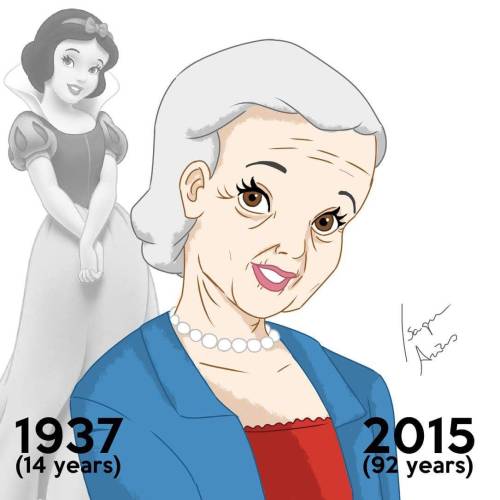Structuring A Series: Part IV
Structuring a Series: Part IV
Structuring a Series Part IV: Follow-Up
Welcome back to Structuring a Series! This is mostly a follow-up to the rest of the blog series. If you haven’t yet read Parts I, II, or III, or familiarized yourselves with Dan Well’s 7 Point Plot Structure, now’s a good time to do it! This installment is for structuring a series that is not a trilogy. Using this structure is best for series with a serialized structure (or mythology arc)…
View On WordPress
More Posts from Feralpaules and Others
Most shows with overpowered supernatural characters always try to come up with elaborate excuses to explain why the characters can’t just magic themselves out of every situation. Good Omens doesn’t really do that, but you don’t really question it because you completely buy that these morons are so unequivocally incompetent that they straight up forget that they have the powers of fucking demigods. They’re like high-level d&d characters who only use the same three moves and have completely forgotten about the 73 magic items sitting in their inventory.
Review of The Dresden Files: Peace Talks (spoilers ahead)
This review is gonna be slightly different than my normal reviews as I am the only Paules Sibling of Awesome who reads The Dresden Files, so I have not talked through my thoughts with B beforehand. I also don't see the necessity of providing a rating for a book that is the sixteenth in a series (not counting the short story collections) - clearly I enjoy the books. Spoilers ahead!
So, the peace talks in question went about as disastrously as expected knowing Harry Dresden was involved, but obviously I didn't expect that. Years ago, Jim Butcher promised us an apocalyptic trilogy to end the series (titled Stars and Stones, Hell's Bells, and Empty Night, in case you missed it), but I never figured we'd actually get to a point where that ending seems in sight.
My big fear going into this was that Karrin Murphy would not survive. I was pleased to see that a) she did and b) she was as badass as ever, despite her injuries from Skin Game. Of course, who knows what will happen in Battle Ground, but really my only hope is that Murphy makes it to the end of the series. Just Murphy and Harry at the end of things, just as they were at the beginning.
Continue Reading on WordPress
Writing from Scratch #4: The Milieu Plot
The Milieu Plot
The problem of the milieu plot involves a problem of location or setting. The character is often either in a place they need/want to escape from or not in the specific place they need/want to be in. The try-fail cycles will involve traveling away from or to the location. Gulliver’s Travels, The Great Escape, and The Hobbit contain milieu plots.
The Lord of the Rings contains one very large milieu – the problem of getting the One Ring from the Shire where its been hidden for a number of years to Mordor where it can finally be destroyed. We can further break this down into smaller milieu plots. Let’s look at one: the problem of crossing the Misty Mountains. (And we’ll use the events as they occur in the movie, since more people have watched that than read the book)
A few solutions they could try are not considered because they already know they are too dangerous, such as the northern route, which is swarming with orcs and goblins, and the Gap of Rohan, which gets too close to Isengard for comfort.
First try: take the Pass of Caradhras. Fail: No, they can’t cross this way, and Saruman is actively attacking them.
Second try: enter the Mines of Moria. Fail: Yes, they are able to enter, but the Dwarven reception committee they were expecting to lead them through is not there.
Third try: search Moria for the Dwarves and a guide through. Fail: No, there are no Dwarves to guide them, and goblins have now been alerted to their presence and are attacking.
Fourth try: run like hell away from the goblins. Fail: Yes, they are able to run across a chasm to escape the goblins, but a Balrog takes out Gandalf.
Final try: follow Gandalf’s instructions to flee (or “fly”). Solution: they get out of the Mines of Moria, and are on the other side of the Misty Mountains, ready to continue with another micro-milieu.
Prompt: write a flash fiction with a Milieu in which your character’s plot-problem is that they need to go to their grandmother’s house for Sunday dinner. The character, setting, genre, and stakes, as well as what is preventing them from simply going to Grandma’s is up to you. This simple plot can create a story that is anything from family drama to international spy thriller.
If you want to read more of my 80+ posts, you can check them out on my website theferalcollection.com

The Left Hand of Darkness went on to win both the Nebula and Hugo Awards, among others, has been reprinted more than 30 times, and is considered a groundbreaking work of science fiction.
It’s also a bloody good read.
source
Writing from Scratch # 11: Compound Plots, Part 1
Compound Plots, Part 1: Episodes
Like complex plots, compound plots have two or more plots put together, but unlike complex plots, in compound plots, the plots can be split apart and still work as a Complete Thought.
The first way to compound plots that we’ll go over is via episodes. So, we first we need to straighten out some terminology. There is a current trend in storytelling that could be called anti-episodic (there are pockets where this is not as much the case, like crime and mystery books and television); instead what’s really popular is “serialized” storytelling. What people generally mean when they talk about episodic versus serialized storytelling is that an episodic style has a different unconnected, self-contained plot every episode or book and that a serialized style has every episode or book contributing to one very large season or series spanning plot. As with most any binary, what we’re actually looking at is a spectrum – Harry Potter has a self-contained plot with every novel, but overall, every novel contributes to the plot of Voldemort’s resurrection and final death.
Supernatural is a really interesting case study because it lasted so long and it started before the anti-episodic trend took hold. So, you can see the early seasons, especially the first season, very firmly on the episodic side of the spectrum with its monster of the week format and it slowly became more and more serialized to the point where an unrelated monster of the week was anomalous and generally warranted some kind of in episode commentary by a character.
When I talk about episodic compound plots, I’m kind of talking about this idea, but it’s squares and rectangles. Or maybe squares and quadrilaterals. What I’m talking about is that one plot-problem will be solved, and then another plot-problem will arise. What the episodic-serialized debate is talking about is the causal relationship between those plot-problems. There are some serialized series that do not have episodic compound plots, but most of them do.
Continue Reading on WordPress







Disney Princesses at their Current Ages
Writing from Scratch #12: Compound Plots, Part 2
Compound Plots, Part 2: Parallel Plots
Parallel plots share a lot in common with subordinate plots. As with subordinate plots, parallel plots occur simultaneously – the individual problems and their solutions should be introduced and resolved at roughly the same time. However, parallel plots can be divided from each other and stand on their own, unlike with a subordinate plot which is dependent on the principle plot for its try-fail cycles.
“Parallel plots” is a bit of a misnomer. “Parallel” comes from the idea of parallelism in sentence construction because parallel plots often act as mirrors to one another or two sides of the same coin; they often work on each other indirectly to strengthen or emphasize the Thought of the story. What we don’t want to do is fall into the trap of thinking that the plots cannot intersect; although you should be able to separate them into their own stories, in a single story, they are meant to work together.
Superhero stories have parallel plots a plenty with the main character dealing with a plot-problem as their civilian identity and dealing with a different plot-problem as their superhero identity. We’ll look at one of these examples, Spiderman: Homecoming. Peter Parker is dealing with a Character plot in overcoming his lack of confidence to ask Liz out on a date; meanwhile Spiderman is dealing with an Inquiry plot involving the sale of alien tech weaponry on the streets. These do have points of overlap – they should for effective storytelling. However, if you take the Inquiry plot out of the story, you have a rom-com/coming-of-age story with a complete plot of no confidence to ask Liz out to yes confidence to ask Liz out. If you take the Character plot out of the story, you still have Spiderman investigating the origin of the alien tech weaponry.
Continue Reading on WordPress
I always find it kind of weird that matriarchal cultures in fiction are always “women fight and hunt, men stay home and care for the babies” because world-building-wise, it makes no sense
think about it. like, assuming that gender even works the same in this fantasy culture as it does in ours, with gender conflated with sex (because let’s be real, all of these stories assume that), men wouldn’t be the ones to make the babies, so why would they be the ones to care for the babies? why is fighting and hunting necessary for leadership?
writing a matriarchy this way is just lazy, because you’re just taking the patriarchy and just swapping the people in it, rather than actually swapping the culture. especially when there are so many other cool things you could explore. like, what if it’s not a swap of roles but of what society deems important?
maybe a matriarchy would have hunting and fighting be part of the man’s job, but undervalued. like taking the trash out or cleaning toilets: necessary, but gross, and not noble or interesting. maybe farming is now the most important thing, and is given a lot of spiritual and cultural weight.
how would law work? what crimes would exist, and what things would be considered too trivial to make illegal? who gets what property? why?
how would religion work? how would you mark time or the passage into adulthood? what would marriage look like? if bloodlines are through the mother, bastardy wouldn’t even be a concept - how does that work?
what qualities would be most important in a person? how would you define strength or leadership? what knowledge would be the most coveted and protected? what acts or roles are considered useless or degrading?
like, you can’t just take our current society and say you’re turning it on its head when you’re just regurgitating it wholesale. you have to really think about why things are the way they are and change that.
When writing descriptions, consider what you want to accomplish. Giving the reader an idea of the layout of a room will require different types of descriptions/different descriptive words than evoking emotions. Think also of who is giving the descriptions: a first person or subjective third person narrator should describe based on how they experience the setting, while an objective third person narrator may have more freedom to match the descriptions to your own preference.
Accepting help is brave - Hotlines/crisis lines

-
 feralpaules reblogged this · 9 years ago
feralpaules reblogged this · 9 years ago
check out my main blog www.theferalcollection.wordpress.com and find fandoms and funstuff on www.theferalcollection.tumblr.com
103 posts